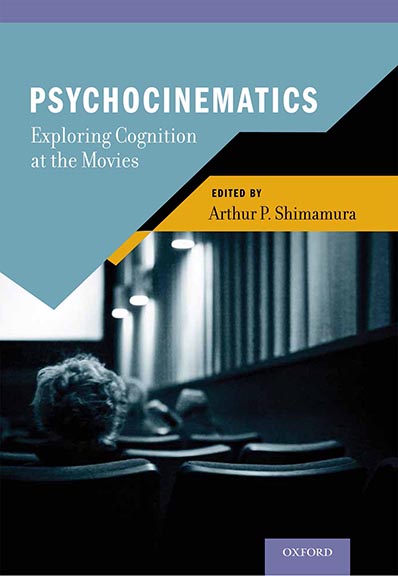Psychocinematics: Bridging Art and Science at the Movies

Art Shimamura, Professor of Psychology and faculty member of the Helen Wills Neuroscience Institute, studies the psychological and biological underpinnings of memory and movies. He was awarded a John Simon Guggenheim Fellowship in 2008, which led him to study links between art, mind, and brain. He edited the volume Psychocinematics: Exploring Cognition at the Movies and is the author of Experiencing Art: In the Brain of the Beholder. Below he discusses “psychocinematics,” his approach to cognition at the movies that draws on psychology, brain science, and the humanities.
Movies instill suspense, humor, horror, sadness, anger, and surprise perhaps more often than in any other art medium or form of entertainment, and likely (hopefully) more often than in real life. Through trial and error, filmmakers have developed techniques that capture our senses, thoughts, and feelings, yet we have a rather meager understanding of how these techniques work. Although philosophers and film theorists have considered the nature of film, particularly within the context of its social ramifications, few scientists have considered empirically how we experience moving images—a scientific undertaking that I have coined “psychocinematics.” As the name implies, the goal is to understand the psychological (and biological) underpinnings of our movie experience.
When we experience movies, indeed when we experience anything, we don't start from a “blank slate,” we are always applying our knowledge to new experiences. This wealth of information includes factual knowledge about the world, cultural knowledge, and, of course, knowledge from personal experiences. Ernst Gombrich, the noted art historian called this influence “the beholder's share.” With respect to movies, filmmakers play on our prior knowledge (of life and of movies) by offering an audiovisual experience that is part storytelling and part a simulation of how we naturally experience the world. Recent psychological studies have shown that as we watch an engaging film, such as a Hitchcock suspense or the scientific thriller, Blade Runner, our attention is so strongly riveted to the screen that everyone's eyes are focused on the same thing. Like magicians, filmmakers have discovered methods—through camera placement, movement, and film editing—that guide our attention and offer an illusion of reality.
With the advent of functional magnetic resonance imaging (fMRI), brain scientists can place individuals in a scanner and have them watch a movie while recording the brain areas that are active during the experience. In this way, one can map psychological processes with brain activity and consider the neural underpinnings of this audiovisual experience (see research by Uri Hasson and Jack Gallant). We must not, however, fall prey to a modern-day version of phrenology where bumps on the head are replaced by bright spots on a brain scan. We need to go further and develop theories that describe the functional dynamics of how different brain regions interact. Psychocinematics offers an opportunity to consider our movie experience from a scientific perspective that connects minds, brains, and experience. In the end, we need to combine psychology and biology with the perspectives of disciplines such as philosophy, film studies, art history, sociology, anthropology, and history to gain a broader understanding of the magic of movies.